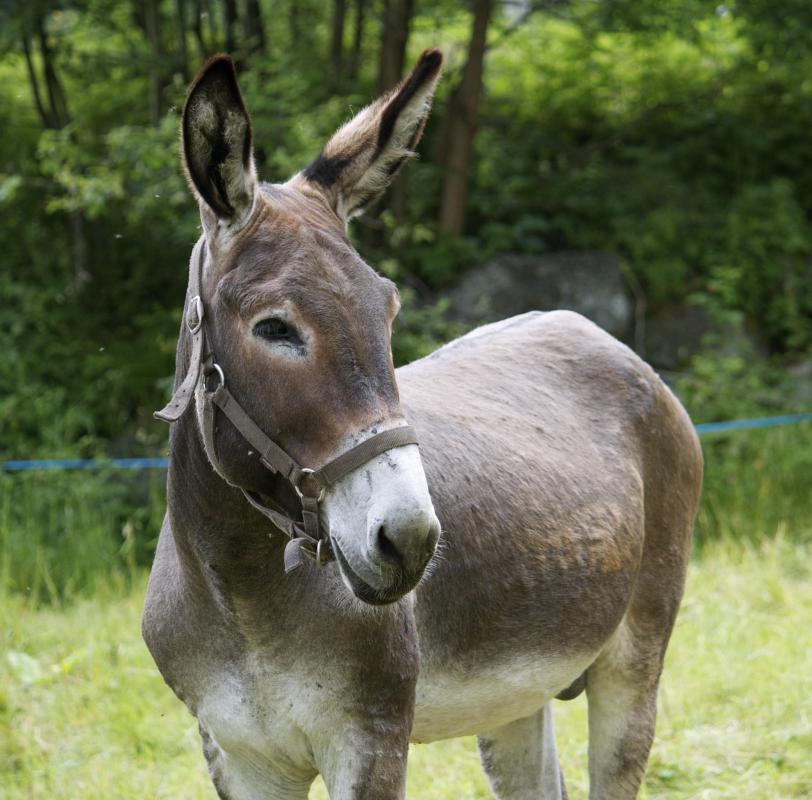At WiseGEEK, we're committed to delivering accurate, trustworthy information. Our expert-authored content is rigorously fact-checked and sourced from credible authorities. Discover how we uphold the highest standards in providing you with reliable knowledge.
What is Kalaupapa National Park?
Kalaupapa National Park is a beautiful stretch of land on the Northern Peninsula of Molokai Island in Hawaii. The park was established in 1980 to mark both the tragedy of enforced exile of those who contracted Hansen’s disease (leprosy) and the triumph of the many who came to care for the sick and run the colony. The park is called a quiet and contemplative place, still housing some of those formerly affected by the condition, though Hawaii no longer requires anyone who once had leprosy to remain secluded from friends and family.
The area that is now Kalaupapa National Park was used from 1866-1969 as a means of keeping those with leprosy away from the general population. Leprosy is now understood as a curable disease that isn’t highly contagious. At the time, there was no cure for the condition, and the Hawaiian government felt forced exile was the only means for controlling the spread of the devastating illness. They chose the village of Kalawao on the Kalaupapa peninsula because it was isolated.

Though the area was one where people could farm, the living conditions were initially difficult and substandard. Residents, who were now separated from family and friends for life and referred to by other Hawaiians as “the lost,” were deeply depressed by their new circumstances and their affliction from the disease. They needed help, even though a few had family members who willingly agreed to come with them and were called “kokua” or helpers. Part of the attraction of Kalaupapa National Park are the monuments and statues which honor these helpers, who willingly accepted exile to care for others.
Additional help came with the arrival of a Belgian priest, Father Damien. He and members of other religions worked hard to improve living conditions of Kalaupapa residents, and to care for those too sick to work. Father Damien did contract the disease, but he was notably not careful about washing his hands. Eventually the advent of sulfa drugs and then penicillin helped to treat and cure the disease.
Today Kalaupapa National Park is open to visitors by tour only, and you must arrange to tour the park through the Hawaiian Department of Health or through Damien Tours. If you don’t have a permit to visit the park, you cannot go. The only way to get to Kalaupapa National Park is air flight, mule or sometimes buses, and you cannot bring anyone younger than 16 with you. There are both mule and on foot hiking tours of the park, and you should prepare by bringing plenty of water, good shoes to walk in, and some light rain gear.
AS FEATURED ON:
AS FEATURED ON:











Discussion Comments
The interest in Kalaupapa is growing at a faster rate since it appears that father Damien might be proclaimed a saint by the Vatican. A miracle that the Vatican recognized as a true miracle occurred when a patient with an incurable disease prayed at the grave of father Damian, and was cured of the disease.
There are still some people living in Kalaupapa, even though they are free to leave, however, Kalaupapa is their home and they remain willingly. To protect their privacy and out of the respect for those who have lived and died there, there is a limit placed on the number of visitors who can visit Kalaupapa each day. The place is almost sacred, therefore the limit on the number of visitors will remain, even though it might increase after sainthood of father Damien. There will probably be more pilgrims interested in visiting this beautiful, isolated, and really sad spot in the Pacific.
Post your comments